This summary article was written by Colleen McCuskey, an intern with NTI’s International Fuel Cycle Strategies team during fall 2021.
The IPNDV hosted a virtual symposium on September 28 and 29, 2021 as an opportunity for senior leaders and IPNDV experts to present the work of the Partnership and all it has accomplished since it was established in 2014. The event was aimed at the broader nuclear nonproliferation and arms control community and saw more than 100 people from 23 countries tune in to the discussions each day. Participants heard from experts who discussed the need for, and long-term benefits of, a multilateral nuclear disarmament verification system. The symposium opened with remarks from Ambassador Bonnie Jenkins, Undersecretary of State for Arms Control and International Security at the U.S. Department of State, and Ernest J. Moniz, Co-Chair and CEO of the Nuclear Threat Initiative and former U.S. Secretary of Energy.
Ambassador Jenkins highlighted the importance of the Partnership and its work, particularly in contribution to the NPT: “[The IPNDV] is a practical tool that could be used to overcome obstacles to further progress on nuclear disarmament. The work being done within the Partnership requires us all to […] work together to develop real solutions to the challenges we all face.”
Moniz called the Partnership’s work “truly innovative” and groundbreaking. “The bottom line is that the IPNDV is not just identifying the challenges associated with nuclear disarmament verification, it is developing a toolbox of potential solutions to address them,” he said.
The first day of the event was hosted and moderated by Michael Edinger, Foreign Affairs Officer at the State Department’s Bureau of Arms Control, Verification, and Compliance, and the panel discussion centered around lessons learned from the IPNDV’s work over the past six years. Panelists included three veterans of the Partnership: Irmgard Niemeyer, Division Head of Nuclear Safeguards and Security, Forschungszentrum Jülich (Germany); Jens Wirstam, Deputy Research Director at the Swedish Defense Research Agency (Sweden); and Malcolm Coxhead, Director for CTBT and Disarmament in the Australian Safeguards and Non-proliferation Office (Australia).
The second day’s panel discussions focused on technology as an enabler of progress and placed nuclear disarmament verification in a broader context. Carmen MacDougall, Senior Vice President at the Nuclear Threat Initiative, served as the day’s host, and the two discussion panels were moderated by Alicia Swift, Program Manager of Nonproliferation and Arms Control R&D at the Y-12 National Security Complex (United States) and Elaine Kanasewich, Acting Director of the Emergency Management and Programs Division, Directorate of Security and Safeguards, Canadian Nuclear Safety Commission (Canada). Panelists included Michele Smith, Deputy Director for the Office of Nuclear Verification at the National Nuclear Security Administration (United States); Klaas van der Meer, Group Head of the Nuclear Research Center (SCK CEN) (Belgium); Jørn Osmundsen, Special Envoy for Disarmament Affairs at the Norwegian Ministry of Foreign Affairs (Norway); and Jeffrey Eberhardt, Senior Advisor in the Arms Control, Verification and Compliance Bureau at the U.S. Department of State (United States).
Collaboration – Blending States and Experts
A fundamental aspect of the Partnership highlighted by multiple speakers is its collaborative model: it includes both states with and without nuclear weapons, and technical and political experts working together. As Wirstam explained, “although there are separate issues, they are all entangled in some way or the other, so the technical, the procedural, and the legal aspects […] need to be dealt with in a comprehensive way.”
The collaborative model has created room for information sharing between the experts. Niemeyer said that when preparing to host a joint exercise with France (the NuDiVe exercise), it “was very important to have a nuclear-weapon state on board for the preparation […] our colleagues from France always reminded us about the concerns they may have as a nuclear-weapon state.” In addition, Smith talked about how, as they have continued to work on issues together, the technical and policy experts have started to learn one another’s lexicons and better understand one another’s perspectives.
Technology Creation, Adaptation, and Addition
Technology is integral to the verification process. However, as Smith explained, for the technological aspects of the process to work, technology needs to be created, and existing technology adapted, to fit the specific needs of the nuclear disarmament verification process. Van der Meer spoke on the balance between getting enough information for a measurement to be meaningful, but not revealing proliferation-sensitive information. A possible solution is the creation of a technology that uses information barriers. For example, rather than showing the final numerical reading of a material, it might only show a red or green light indicating whether or not that material reading was in proper range. Each technological addition to disarmament verification must account for these security considerations.
IPNDV’s Evolution
Since its inception, the IPNDV has focused on creating a collaborative Partnership where experts engage in real, practical work. As a result, a lot has been learned over the last six years. The greatest area of change and growth was noted by Wirstam and Eberhardt: the enduring commitment of each state participant, and their belief in the possibility and importance of the work. A long-term perspective is needed when approaching the work of the Partnership, and therefore this commitment and buy-in is crucial for its overall success.
In addition, Wirstam explained how increasing “understanding of the challenges and solutions to nuclear disarmament verification […] has made it possible to go from this very narrow and specific task in the early days, to where we are today where we are discussing broader, but still technical in detail, the issues related to disarmament verification.”
Nuclear Disarmament Verification in the Broader Context
Multiple speakers focused on the idea of creating a “toolbox” and filling it with tools that can be used to craft future verification mechanisms so that when the time comes to negotiate treaties, experts and inspectors have those tools at the ready. Not only do verification mechanisms need to be created, but technologies need to be both produced and adapted for specific use in specific circumstances. Coxhead spoke on the importance of conducting exercises throughout the process to test and refine concepts, implementing new concepts and moving the work from principle to practice. This demonstrates the complexity of the work and the need to do the work long before it is urgently needed.
By building “mutual confidence” and “a culture of cooperation,” the IPNDV’s work is, as Osmundsen described, “a very good example of science diplomacy and how it can contribute to progress.” Moving forward, the Partnership is focusing on how to implement the concepts they have developed, making them more effective and efficient. As Moniz stated, “[t]ogether, we’ll continue to answer some very tough questions, build and diversify international capacity and expertise, and be poised for a future when we are monitoring and verifying nuclear weapons reductions.” After all, bringing together both the technical and political sides to solve each of the challenges faced creates, as Eberhardt defined, “the sense of the art of the possible.”
Watch both days of the IPNDV Virtual Symposium here.



